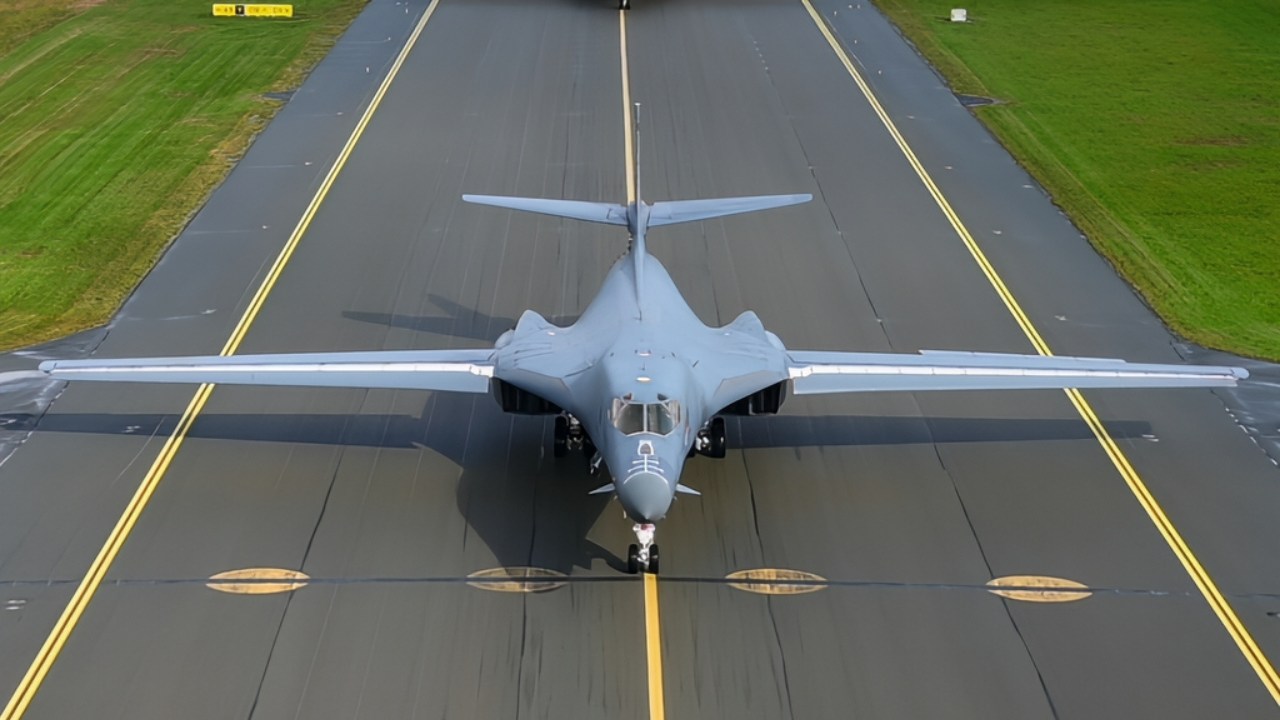Key Points and Summary – The B-1B Lancer is getting a timely reboot to cover a looming bomber gap before the B-21 matures.
-USAF is reopening dormant hardpoints with new Load Adaptable Modular (LAM) pylons—up to six stations sized for 5,000-lb (potential 7,500-lb) stores—to boost external carriage by as much as 50%.
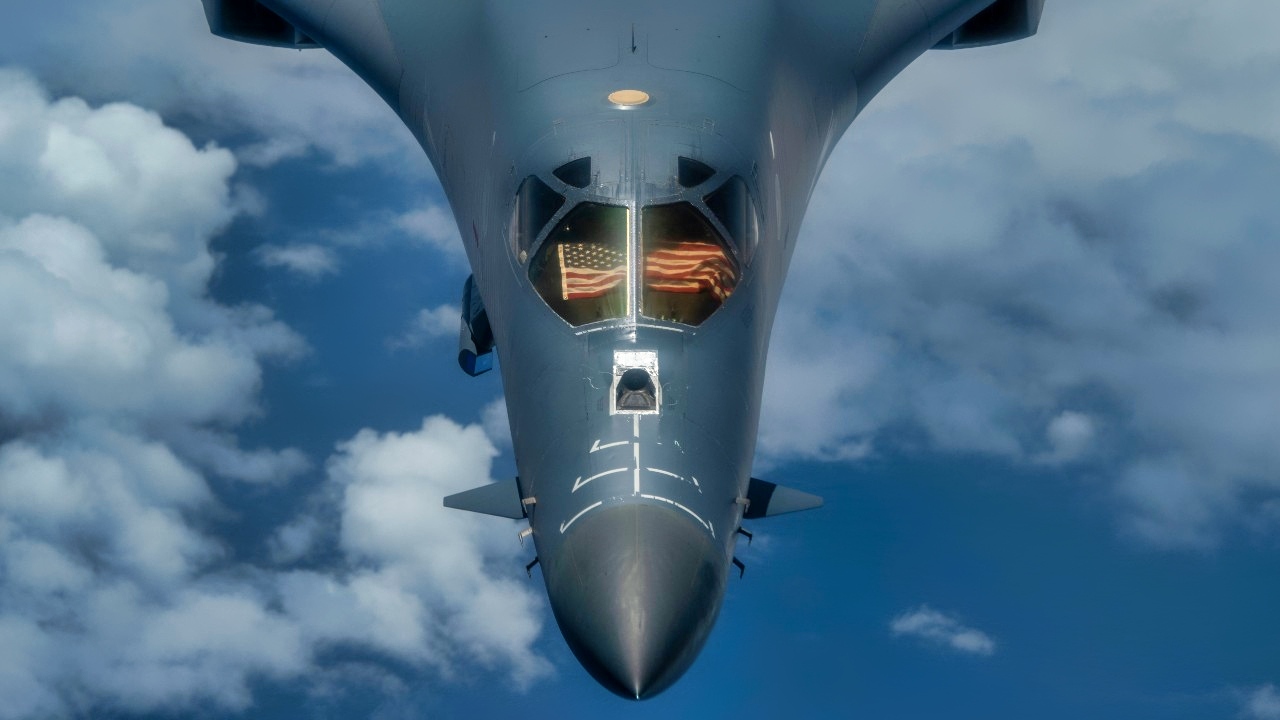
A 9th Expeditionary Bomb Squadron B-1B Lancer flies over the East China Sea May 6, 2020, during a training mission. The 9th EBS is deployed to Andersen Air Force Base, Guam, as part of a Bomber Task Force supporting Pacific Air Forces’ strategic deterrence missions and commitment to the security and stability of the Indo-Pacific region. (U.S. Air Force photo by Senior Airman River Bruce)
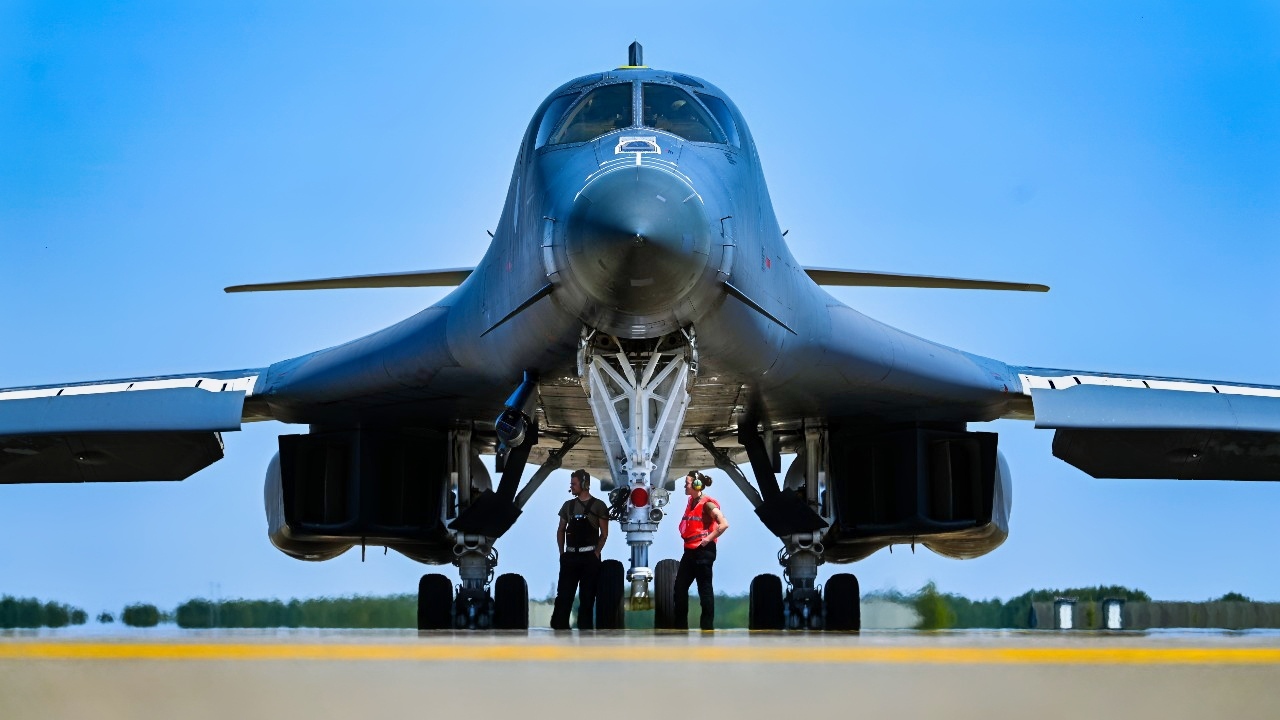
U.S. Air Force Senior Airman Colby Delia, 9th Expeditionary Bomb Squadron crew chief, and Airman 1st Class Olivia Ward, 9th Expeditionary Bomb Squadron crew chief, prepare for a B-1B Lancer to take off for a mission at Misawa Air Base, May 9, 2025. BTF missions provide opportunities to train and work with our allies and partners in joint and combined operations and exercises. (U.S. Air Force photo by Airman 1st Class Mattison Cole)
-FY26 funding backs wind-tunnel/CFD work and stores-management software after earlier hypersonic integration studies; LRASM buys and operational testing follow in FY27, pointing to fielding in the mid-to-late 2020s.
-Net effect: a “Super” Lancer that hauls more, launches farther, and doubles as a hypersonic testbed—an affordable bridge to the B-21 and a needed deterrent now.
Why the B-1B Is Being Revived – Again
The U.S. Air Force’s B-1B Lancer, which made its name as a Cold War supersonic bomber, is undergoing a significant transformation to extend its service life.
Despite being designed in the 1970s and introduced in the 1980s, this now-iconic bomber is being adapted to carry hypersonic missiles and to expand its payload, giving it new relevance deep into the 2030s.
But why invest in what should be considered a legacy platform? And why now?
The answer is simple: the Air Force needs it, it’s possible to make it happen at a sensible price, and rising global tensions mean the United States must be prepared.
With its large payload capacity and speed, the B-1B serves as a bridge to the next-generation bomber while still packing plenty of potential for the next decade or more.
The B-1B and What’s To Come
First conceived as the Mach 2+ B-1A, the bomber’s program was adapted into the B-1B, a bomber with a top speed of around Mach 1.25 and variable-sweep wings.
The Air Force acquired 100 B-1Bs in the 1980s. In the wake of the Cold War, the bomber was stripped of its nuclear-delivery role and capabilities, becoming a more broadly applicable conventional strike platform.
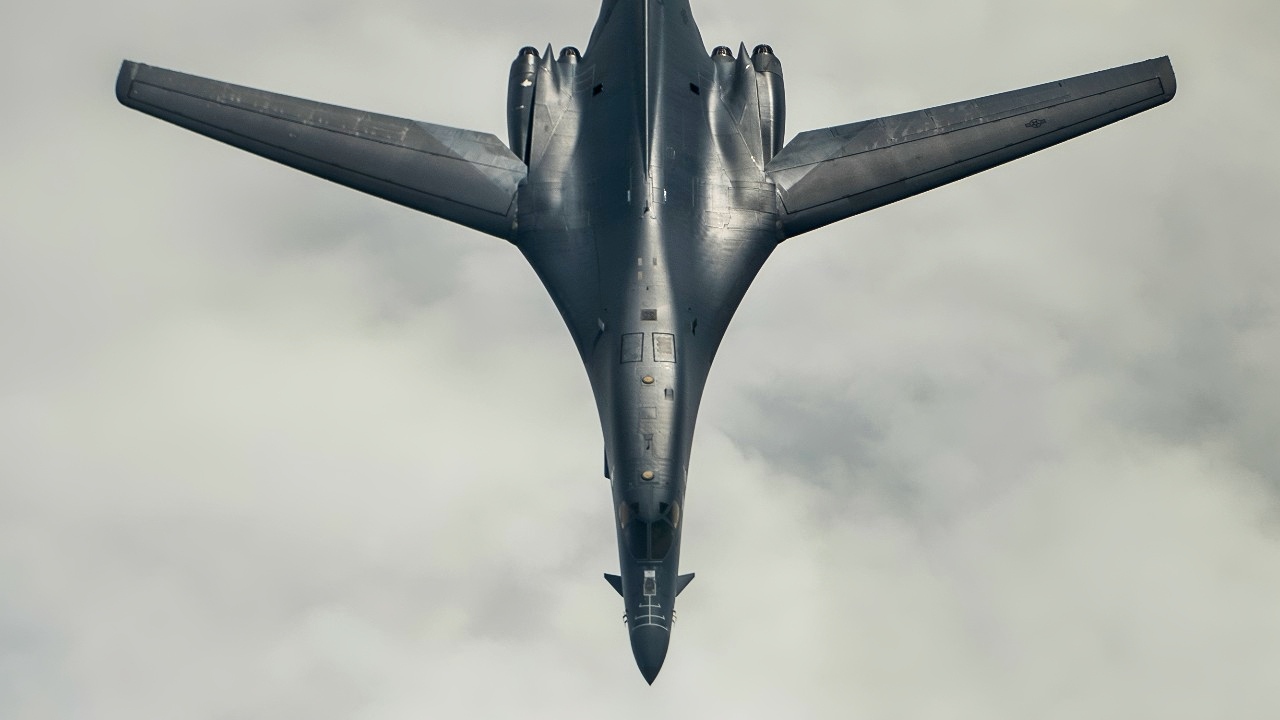
A U.S. Air Force B-1B Lancer, assigned to the 37th Expeditionary Bomb Squadron, Ellsworth Air Force Base, S.D., flies over the East China Sea, Jan. 9, 2018. The Lancer serves as premier platform for America’s long-range bomber force, carrying the largest conventional payload of guided and unguided weapons in the Air Force inventory. (U.S. Air Force photo by Staff Sgt. Peter Reft)

A B-1B Lancer aircraft from the 34th Bomb Squadron departs from Al Udeid Air Base, Qatar, April 8, 2017. This departure marks the airframe’s first mission in the U.S. Air Force Central Command’s area of operations in more than two years. (U.S. Air Force photo by Staff Sgt. Joshua Horton)
After decades of reliable service, this adapted platform was slated for replacement by the upcoming B-21 Raider—but conditions have changed, giving it a new opportunity to serve.
Reductions in bomber numbers and a series of ongoing delays in new platforms mean that the Air Force risks a striking capability gap at a time of rising global tensions.
The solution, therefore, was an upgrade path for legacy platforms like the B-1B.
Rather than retire the Lancer, the Air Force is re-investing in the airframe and repositioning it as a sort of “Super Lancer.”
In its Fiscal Year 2026 budget submission, the U.S. Air Force included the External Heavy-Stores Pylon initiative for the B-1B, requesting approximately $50.26 million to enable additional external carriage of standoff munitions.
Compared to other upgrade programs, it’s not a massive sum of money—and that reflects the nature of the upgrade.
While the Lancer is getting new capabilities, it is not being completely refitted and upgraded. It is, instead, being made more lethal.
In July 2025, the USAF awarded a contract to Boeing to provide the Load Adaptable Modular (LAM) pylons for the B-1B fleet, versatile external pylons designed to be mounted on the aircraft.

B-1B Lancer Bomber. Image Credit: Creative Commons.
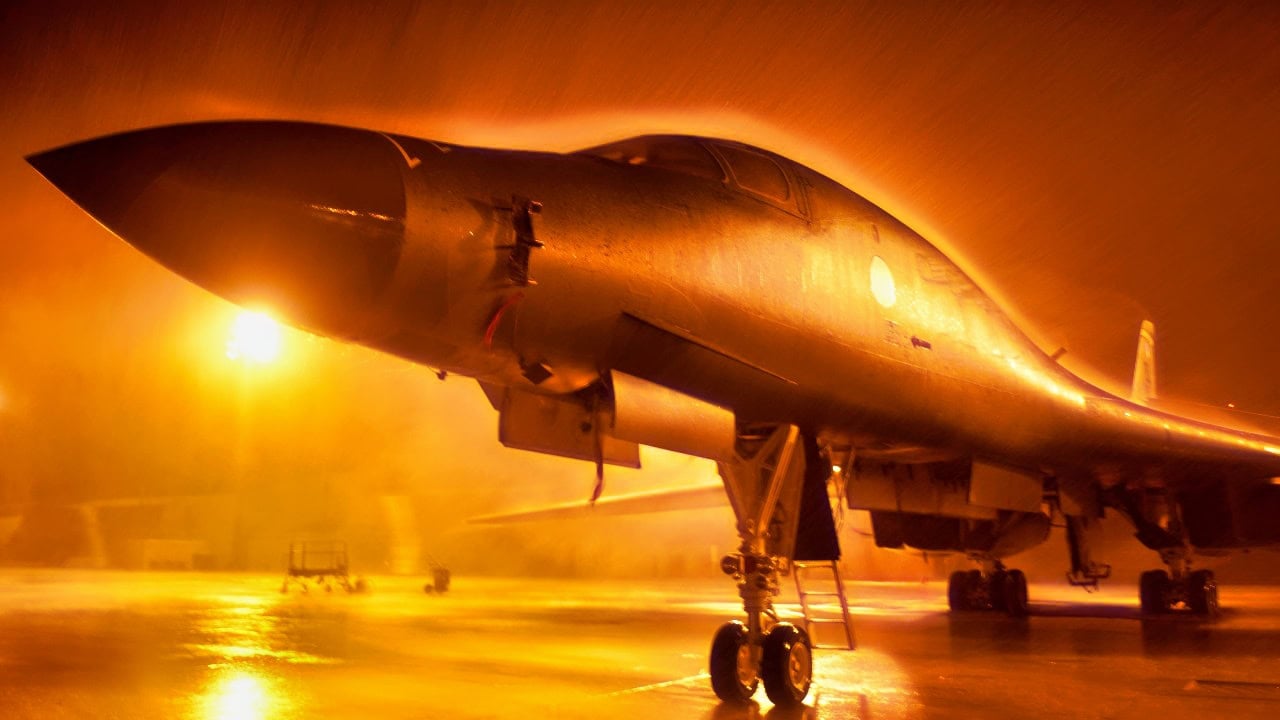
B-1B Lancer Bomber. Image Credit: Creative Commons.
Under the contract, each B-1B may be outfitted with up to six LAM external pylons beneath its fuselage, reopening hard-points that had been dormant for years under arms-control constraints.
The program’s stated goal is to expand weapon carriage capacity significantly.
Some sources have suggested a payload increase of up to 50% when all external stores are fully utilized.
Upgrades will also see the bomber capable of carrying heavier weapons, not just more of them. The pylons are sized for 5,000-lb-class stores, with Boeing stating that there is potential for up to 7,500 lb.
What’s more, the platform is also expected to serve as a hypersonic weapon testbed, with USAF documents stating that the B-1B can support the “rapid integration of priority hypersonic weapons in support of national security objectives.”
When It’s Expected to Be Ready
The program’s rollout has been mapped out over several budget cycles.
In FY 2022-2023, about $20 million in congressional add-funding supported the initial hypersonic integration program work on the B-1B’s external carriage, assisting engineers in confirming load-bearing requirements and the aerodynamic impacts of the pylon redesign.
By FY 2026, the Air Force had formally requested funds for wind-tunnel and computational fluid-dynamics testing, as well as for stores-management software to handle the new heavy munitions.
The service expects structural design reviews and initial hardware fabrication to occur within this time window.
In late FY 2027, the same documents project that procurement of new long-range standoff weapons, such as the Long-Range Anti-Ship Missile (LRASM), will begin.
Once those weapons are procured, the upgraded B-1Bs will begin operational testing.
The progress so far indicates that the “Super” Lancer will be fielded in the mid-to-late 2020s, several years before the B-21 Raider is expected to reach full operational service.

B-1B Lancer Bomber in Museum in Dayton, Ohio. Image Credit: Harry J. Kazianis/National Security Journal.
If all goes to plan, the new Lancer will serve as a bridge to this next-generation technology, and then likely serve alongside the new, upgraded bombers as part of a mixed fleet.
Closing that bomber capability gap is crucial.
With the B-21 still in low-rate production and delays almost inevitable for programs this complex, the Air Force faces a transition risk in long-range strike capacity.
Upgrading the B-1B mitigates that risk and keeps an existing, proven platform in operation.
And in an era of renewed great-power competition, the upgrade is very much a strategic necessity.
About the Author:
Jack Buckby is a British author, counter-extremism researcher, and journalist based in New York. Reporting on the U.K., Europe, and the U.S., he works to analyze and understand left-wing and right-wing radicalization, and reports on Western governments’ approaches to the pressing issues of today. His books and research papers explore these themes and propose pragmatic solutions to our increasingly polarized society. His latest book is The Truth Teller: RFK Jr. and the Case for a Post-Partisan Presidency.
More Military
The ‘Super’ B-52H Stratofortress Bomber Is Already Flying
‘Go Home’: Stealth F-22 Raptor Flew Right Under Iranian F-4 Phantom Undetected
Russia’s ‘New’ PAK DA Stealth Bomber Has a Message for Every Military On Earth
China’s New H-20 Stealth Bomber Has a Message for Any Military on Earth
Mach 2 F-4 Phantom II Fighter Has a Message for Every Air Force on Earth


